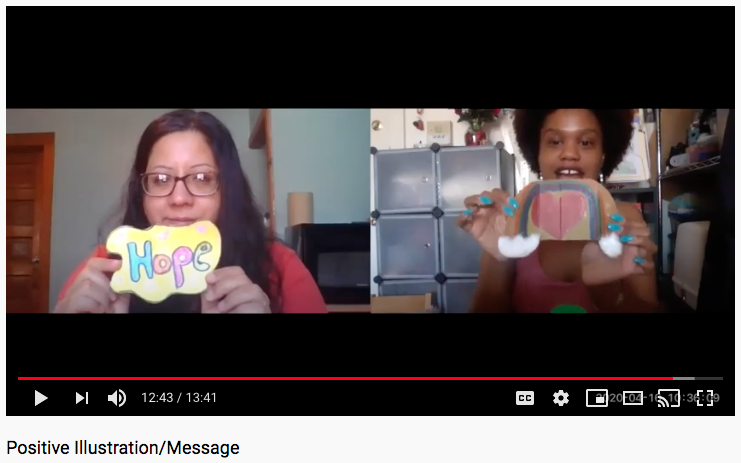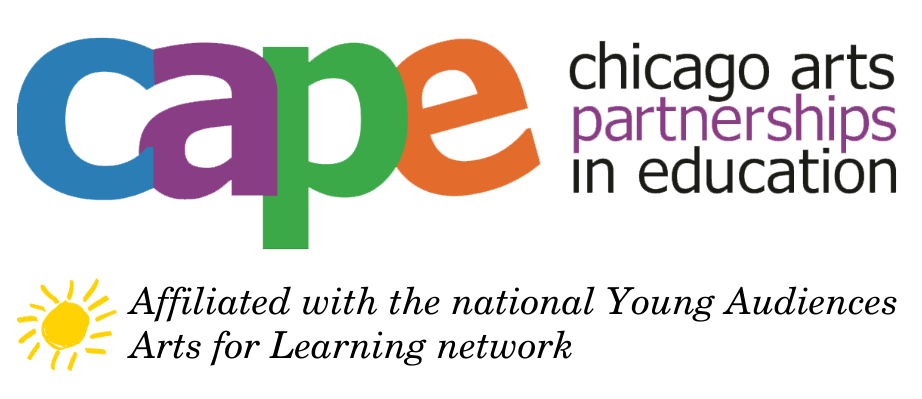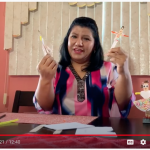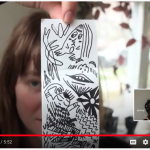CAPE’s Dérive
CAPE recently hosted had its second PPD (Pandemic Professional Development) for teachers and teaching artists in our CAPE After School program. We began with an excellent presentation by Shenequa Brooks and Jackie Limon on co-teaching online. Shenequa and Jackie are co-teachers at New Sullivan Elementary, and Joseph Spilberg and Jenny Lee of the CAPE Program staff had noticed that in their online instructional videos, the pair maintained the same caring and fun tone that they have in their physical classroom, and with both of them in conservation on screen (via a recording Zoom call) the feel of the video is lively and interactive.
Here is Shenequa and Jackie’s recipe for success for co-taught online instructional videos:
- Communicate via text ahead of time on what we want to make.
- We plan to record in the late morning for natural lighting because it’s more inviting.
- We use ZOOM as our recording platform because it’s easy and simple to navigate.
- We do split screens so the viewer can see both of us working at the same time to invite the viewer to collaborate with others.
- Face view – Hand/workspace view
- We practice several times what we are going to say before recording our meeting so we are comfortable on screen.
- We have FUN.

Also for this PPD, we wanted to return to ideas that we had been discussing with the group prior to the pandemic. At our last series of PD sessions in January at the Museum of Contemporary Art, we read excerpts from Umberto Eco’s “The Open Work,” as well as Cary Campbell’s “From Educating Openness: Umberto Eco’s Poetics of Openness as a Pedagogical Value.” Of particular relevance for this past week’s PPD were these quotes from Campbell:
“The open work evokes rather than proclaims…the open work cannot dictate or propose a univocal message. Its very structure and motivation embrace disorder and do not fight noise. In this regard, the open work cannot so easily serve a utilitarian function like the road sign, and cannot be marketable in the same way as kitsch art, and similarly cannot be as easily graded or tested.”
“Through this framework, a text or sign system is understood as ‘closed’ if it elicits univocal meanings: expecting a predetermined response from a generic/average reader. However, a work is ‘open’ when it fosters a plurality of interpretative possibilities that actively engage the “existential credentials” of the interpreter. It recognizes that meaning is always something discovered through the action of interpretative semiosis; that it is in a work’s dynamism, its openness, that we locate its aesthetic value: through the merging of a text’s ‘possible worlds’ with our own collective and personal life-worlds.”
We know that for most of our teachers and artists, openness is already part of their practice. As articulated by some of our teacher+artist teams in a recent survey:
“Our question provides multiple opportunities for students’ interpretation and expression that can be unique. It helps students begin to see other ways to interpret nature in a way that pushes/challenges them.”
“It’s inherently open…compare/contrast oneself to others noting similarities and differences- Look at self (introspection) and self to others.”
“Our inquiry question allows students to explore a variety of artistic mediums to help tell their stories. The stories are created by the students, critiqued by the students, and sung/performed/shared by students.”
“We hope our inquiry question inspires students to imagine how they see their world in a unique way.”
So, in the midst of the pandemic, we did not want to lose sight of this and we want to support CAPE teachers and artists to explore what this means in the context of remote learning. We believe that there is great educational and artistic value to supporting work that encourages exploration and non-predetermined outcomes; possibly this value is even higher now than before.
We wanted the teachers and artists to also remember how we applied these ideas of openness in art making and interpretation by having them view documentation of that previous PD, which included images of themselves looking at the work of Mika Rottenberg at the MCA and a writing activity wherein they composed their own didatics for Rottenberg’s exhibit, Easy Pieces. We wanted the group to reflect on this past in-person PD in January to start to think more about how to design curriculum that could, via inquiry and a student-centered approach, still embrace openness as a pedagogical strategy.
Our inquiry questions for the PPD were:
- How are you encouraging students to bring their life experiences into their art? Their “existential credentials?”
- What are you evoking with your students? We have been doing this in our classrooms, so how do we do this online?
Art making is a key component of CAPE’s in-person PD sessions, and as the program staff brainstormed a way to translate this to something home-based, they quickly realized they didn’t need to reinvent the wheel. Teaching Artist Aram Atamian’s recent instructional video ‘Home Dérive’ (watch below) epitomized an approach to online learning that embodies fore-fronting students’ “existential credentials” and “personal life-worlds”. It was decided that the PD group would experience at-home dérive and we were all very pleased with the “open work” that was then created.
***
Home Dérive directions:
3. Imagine that you are encountering this thing or place for the first time.
What do you observe? What could this be? How does it make you feel?
***





